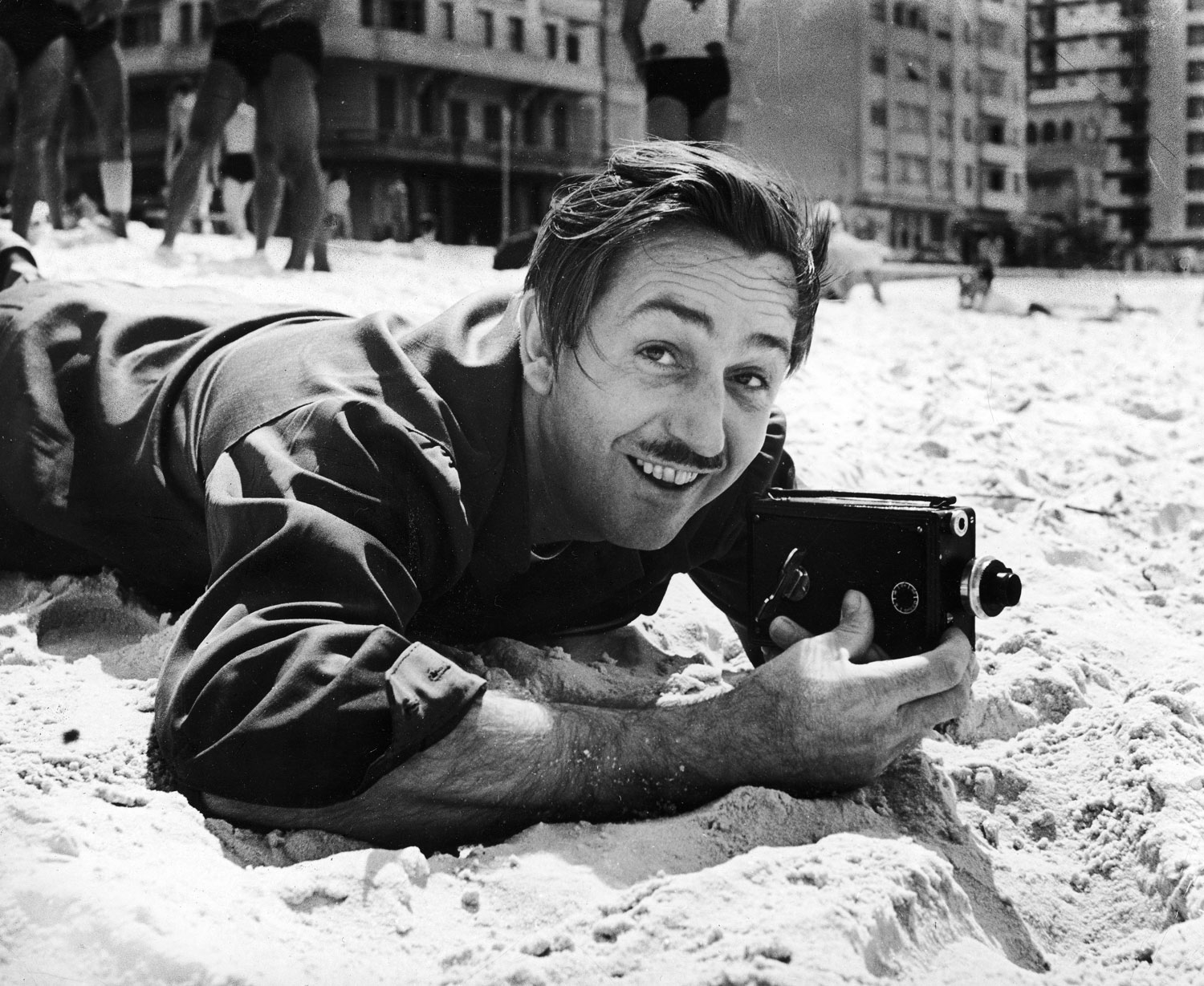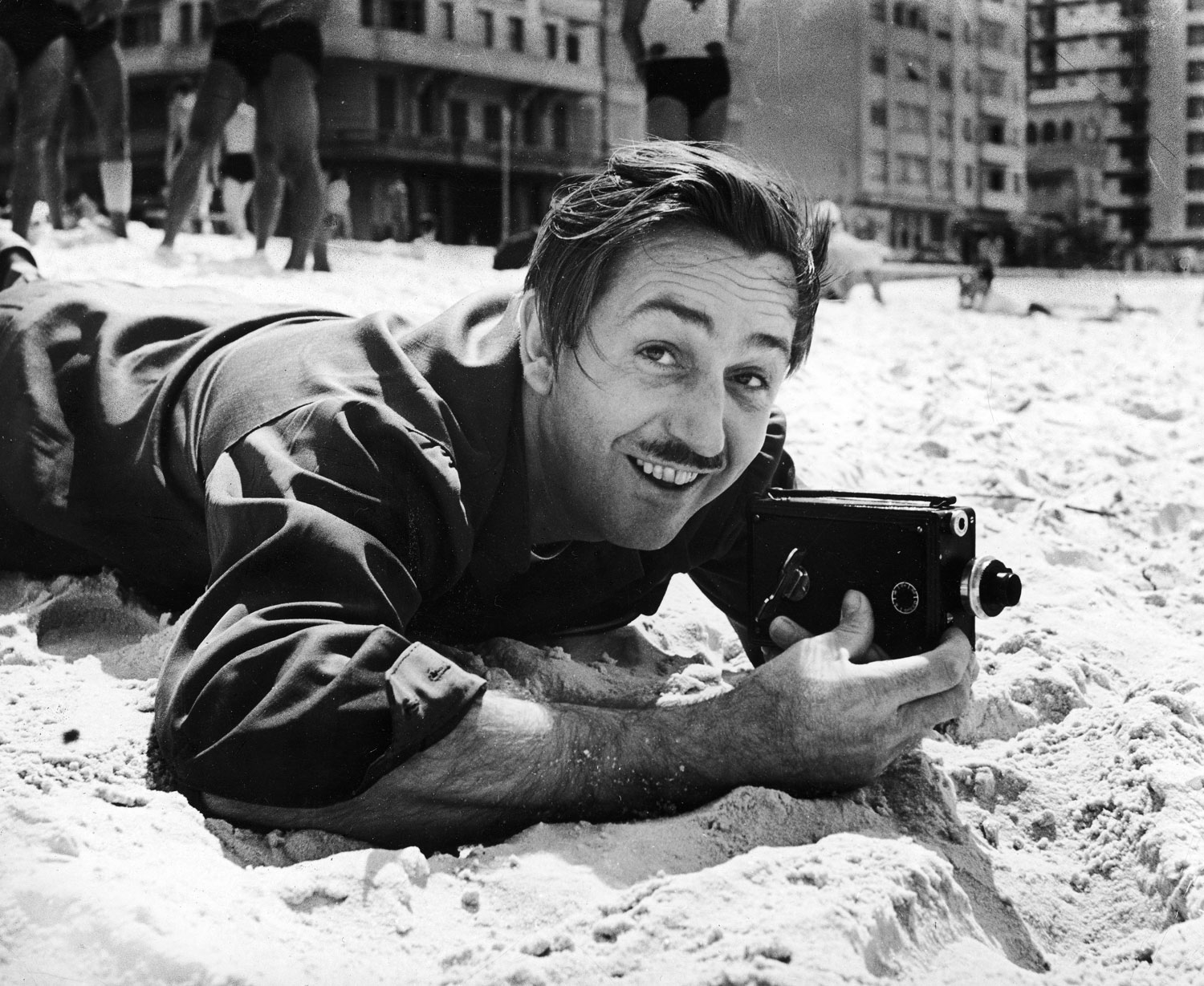
A youngish, black-clad hipster isn’t the image that usually comes to mind when we think of Walt Disney. A gray-haired, grandfatherly guy in a suit and tie—that’s Walt Disney. Right?
And yet here he is, with his little 8mm movie camera—on a beach in Brazil, of all places—looking for all the world like a lank-haired, goofily grinning film student on spring break. What in the name of the sorcerer’s apprentice is going on here?
As it turns out, the Walt Disney in this photograph was on a break, of sorts; in late 1941, with his studio in the midst of a major labor battle—namely, a crippling strike by animators—Disney flew to South America under the aegis of the federal government’s newly formed Office of the Coordinator of Inter-American Affairs. The brainchild of Nelson Rockefeller, the CIAA was created, at least in part, with the aim of countering German influence in countries like Brazil, Argentina and Chile on the eve of the Second World War. The CIAA not only convinced Disney and more than a dozen of his colleagues to fly south on a cultural goodwill tour; taxpayers paid for the entire 12-week trip.
By this point in his career, Disney had already produced Pinocchio, Fantasia, Snow White and the Seven Dwarfs and other landmark features, as well as scores of short films. He had received a special Academy Award for the creation of Mickey Mouse, and had won eight (eight!) Short Subject Oscars for his cartoons. (He would eventually win or receive more than two dozen Academy Awards, including the Irving Thalberg Award in 1942.) In 1941, his name was better-known in South America—and in countless other countries around the globe—than that of almost any other person on earth. He was 39 years old.
Once the United States entered World War II, Disney’s studio churned out military training films, as well as some entertaining Allied propaganda—including the classic Der Fuehrer’s Face (originally titled Donald Duck in Nutzi Land.) In 1944, Disney released a second feature inspired by the trip to South America, The Three Caballeros.
Today, almost a century after Walt and his older brother Roy founded what became, arguably, the most powerful pop-culture force on the planet, it’s somehow both jarring and heartening to see this single photograph of Disney in Brazil, and consider the man not as the familiar face of a multinational corporation, or the creator of a soulless marketing juggernaut, but as a filmmaker, an inventor, an artist.
Love him or hate him, Walter Elias Disney changed the face of entertainment forever. Not bad for a lank-haired guy with a movie camera and a goofy grin.
Ben Cosgrove is the Editor of LIFE.com

More Must-Reads from TIME
- Why Trump’s Message Worked on Latino Men
- What Trump’s Win Could Mean for Housing
- The 100 Must-Read Books of 2024
- Sleep Doctors Share the 1 Tip That’s Changed Their Lives
- Column: Let’s Bring Back Romance
- What It’s Like to Have Long COVID As a Kid
- FX’s Say Nothing Is the Must-Watch Political Thriller of 2024
- Merle Bombardieri Is Helping People Make the Baby Decision
Contact us at letters@time.com